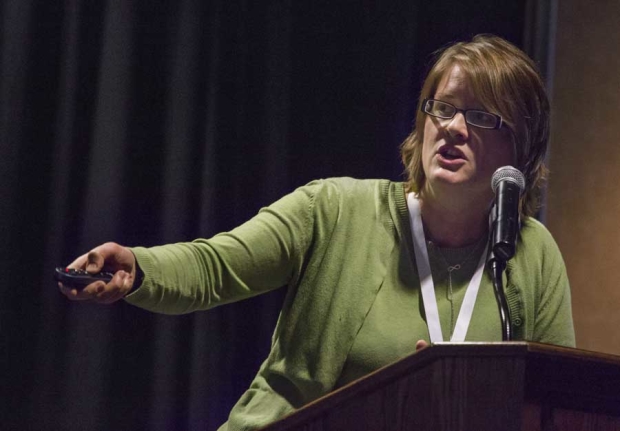Notes from Building Strategies & Orchard Systems for a Sustainable Future.
Dr. Clark Seavert, Oregon Sate University, gave an interesting talk on managing an orchard to achieve profitability. He’s observed three key factors to successful orchard: Price, Yield (when you get it and how much), Costs — Production and Establishment.
Seavert recommends to orchardists a five year business plan with specific goals and a method to benchmark progress. 1. Increase revenues in all blocks to a minimum of $25,000 per acre. 2. Increase net farm income by 5% annually. 3. Improve efficiencies and utilizations of labor with new orchards and future technology. 4. All orchard blocks will be designed to adequately acquire and retain labor.
He identified five financial ratios and performance measures: Working capital; debt to asset ratio, return on assets, profit margin, term debt to EBITDA (earnings before interest, taxes, depreciation and amortization).
He made a prediction: a grower’s data will become a source of revenue because government and others want that information.
For another session on short-term strategies for managing limited labor resources, several key issues were called out: Grow the crop that people want to pick and make a profit doing it.
Increase number and season length of H2-A and non H2-A employees. Increase number of supervisors. Think about crew/housing/transportation investment and sharing. And consider the work environment.
One grower stressed that pickers most of all want to make the most money, so workers will pay attention to a given orchard’s difficulty. If a block is woody versus another block where fruit are easily accessible, they will go with the site that makes them money.
Here’s one remark from a grower that stuck in the mind. In Northern Washington State, the legal marijuana industry is growing. The grower wondered if pot growers will begin competing for resources, such as labor, with fruit growers.
Notes from the Pests and Diseases session.

Gwen Hoheisel directed attendees during the pesticide session to pay attention to sprayer air speed and consider lowering the speed to improve apple coverage from front to back.
Researchers have both good news and bad news for growers dealing with pests and diseases.
Fire blight continues to be a problem for some growers, and the risk factors are many: Young trees and less healthy trees are more susceptible, as are some cultivars.
Orchards in close proximity to an infected orchard are more susceptible. Open flowers in warm weather are most at risk, particularly those that stop open after full bloom, creating a longer window for infection, says Dr. Ken Johnson, professor of botany and plant pathology at Oregon State University.
In addition to pruning symptomatic areas of the tree, Johnson recommends growers treat trees by painting Actigard onto branches below pruning cuts to prevent re-ignition. He also suggests painting the central leaders on young trees after pruning them free of signs of disease.
The 2015 growing season was the warmest on record, but the timing of the season is just as important for some pests.
Growers saw another entire generation of codling moth this year, due to the extended growing season and high number of growing degree days in spring and early summer, plus another late burst of warmth late in the fall, according to Dr. Vince Jones, director of the Washington State University Tree Fruit Decision Aid System.
The good news: Pesticides work better against codling moth in hotter years, which also increase mortality of the moths, so they die sooner and lay fewer eggs. Deploying a delayed first cover treatment can cut codling moth by half, and mating disruption used in conjunction with pesticide applications also helps to reduce populations, Jones says.
Notes from the Pears session.
Marketing opportunities for bagged pears, trellis systems in Hood River and pesticide resistance all came up during the morning session “Northwest Fruit Crops: Pears.”
As a bonus, speakers threw in plenty of pear puns — “pear-idigm,” “perfect pear-ing.” (You get the idea.)
Marketers from the USA Pears, also known as the Northwest Pear Bureau, described the challenges and efforts to convince U.S. shoppers to buy pears, which typically rank low in consumer preference data compared with other fruit.
One of them is the “Check the Neck” campaign, an educational blitz teaching retailers and shoppers how to recognize a ripe pear, said Kathy Stephenson, director of communications of USA Pears.
Researchers discussed growing resistance of mites to decades of chemicals. “We have burned through them one by one,” said Elizabeth Beers, an entomologist for the Washington State University Tree Fruit Research and Extension Center in Wenatchee.
The session ended with growers and researchers discussing orchard design concepts. Adam McCarthy, a Hood River, Ore., grower shared how he aims to redesign his entire farm to high-density trellises within 15 years, primarily to cut down on seasonal labor.
– by Good Fruit Grower staff






Leave A Comment